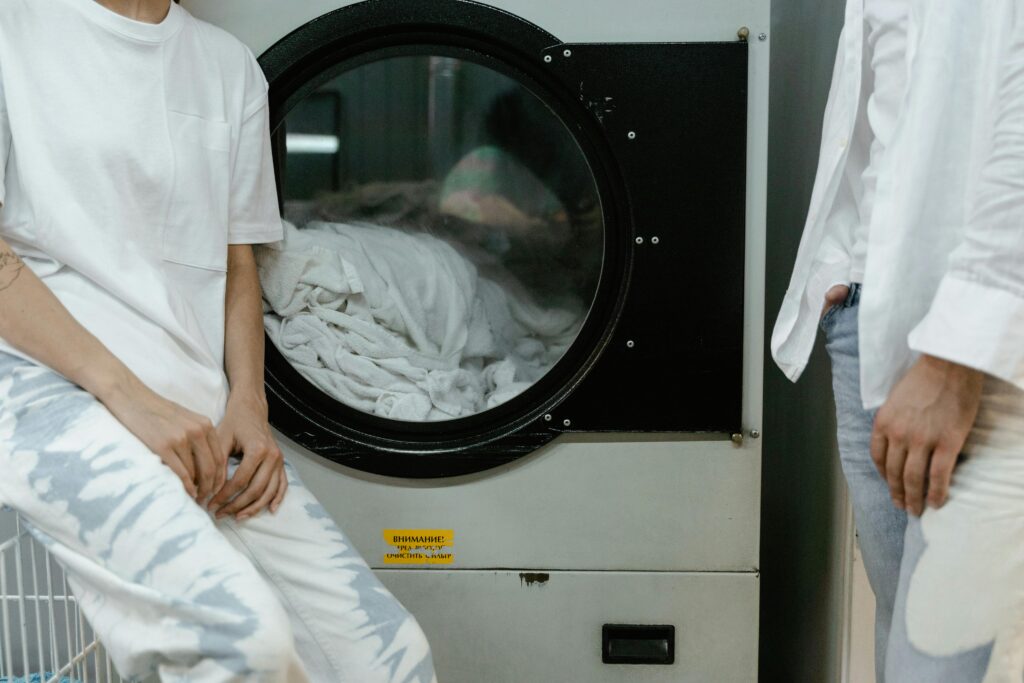Clothes dryers are an essential appliance in many households, providing convenience by significantly reducing the time it takes to dry laundry. Understanding how these machines work, their history, and the common issues they may face can help you make informed decisions about their use and maintenance. This article will explore the evolution of clothes dryers, delve into their operational mechanisms, discuss energy efficiency, and offer tips for troubleshooting common problems.
The Evolution of Clothes Dryers
The journey of clothes dryers began in the late 1700s in England and France, where early versions known as ventilators were used. These primitive devices tumbled clothes in a barrel over an open flame, posing risks of smoke damage and fire. The first patent for a workable dryer was granted to George T. Sampson in 1892, but it wasn’t until 1938 that J. Ross Moore introduced the first electric dryer. Since then, clothes dryers have undergone significant advancements in technology and design, leading to more efficient and safer models available today.
Understanding How Clothes Dryers Operate
At its core, a clothes dryer operates on a simple principle: it uses heated air to evaporate moisture from wet clothes. Here’s how it works:
1. Airflow System: Cold air is drawn into the dryer through vents.
2. Heating Elements: This air is then heated by electric coils or gas burners before entering the drum.
3. Drum Action: The drum rotates, tumbling the clothes and allowing hot air to circulate around them.
4. Moisture Removal: As the hot air absorbs moisture from the clothes, it becomes humid and is vented outside.
5. Thermostatic Control: A thermostat regulates the temperature by switching the heating element on or off as needed.
Types of Clothes Dryers
There are several types of dryers available on the market today:
– Vented Dryers: These are the most common type, expelling hot air outside while drawing in fresh air from the room.
– Condenser Dryers: These collect moisture from the air inside the dryer and condense it into water, which can be drained away or collected in a tank.
– Heat Pump Dryers: Highly energy-efficient models that recycle heat within the dryer using a closed-loop system. They consume significantly less energy than traditional models.
– Gas Dryers: These use natural gas as a heat source and generally have lower operating costs compared to electric dryers.
Maximizing Energy Efficiency
Clothes dryers are among the largest energy consumers in a household, accounting for about 12% or more of electricity costs. Therefore, using an energy-efficient model can lead to substantial savings on utility bills while also reducing your carbon footprint.
Choosing an Energy-Efficient Dryer
When purchasing a new dryer, consider models that are ENERGY STAR certified. These models typically use about 20% less energy than standard ones and come equipped with features such as:
– Moisture Sensors: Automatically detect when clothes are dry and shut off the machine to prevent over-drying.
– Low Heat Settings: Allow for gentler drying cycles that save energy while protecting fabrics.
– High Combined Energy Factor (CEF): Indicates better energy efficiency; the higher the CEF, the more efficient the dryer.
Tips for Efficient Use
To ensure your dryer operates efficiently:
– Sort Laundry by Thickness: Separate lighter items from heavier ones to optimize drying times.
– Avoid Overloading: A full drum allows for better airflow; however, overloading can strain the motor and reduce efficiency.
– Regular Maintenance: Clean lint traps after every use and vacuum out dryer vents regularly to improve airflow and reduce strain on the motor.
Common Clothes Dryer Problems
Despite their simplicity, dryers can experience various problems that may affect their performance:
- No Heat or Insufficient Drying
If your dryer runs but doesn’t produce heat or fails to dry clothes effectively, check:
– Heating Elements: Faulty heating elements may need replacement.
– Thermostat Issues: A malfunctioning thermostat can disrupt temperature regulation.
- Noisy Operation
Loud noises during operation may indicate:
– Worn Drum Bearings: These may need lubrication or replacement.
– Loose Parts: Check for any loose screws or components within the drum assembly.
- Dryer Shutting Off Too Soon
If your dryer shuts off unexpectedly:
– Moisture Sensors: These sensors may be malfunctioning or dirty, causing premature shutdowns.
– Overheating Protection: The dryer has built-in safety features that shut it down if it overheats; ensure vents are clear to prevent this issue.
Conclusion
Understanding how clothes dryers work and how to maintain them can enhance their efficiency and lifespan. By choosing energy-efficient models and following best practices for usage and maintenance, you can save money on utility bills while also contributing positively to environmental sustainability. Whether you’re troubleshooting common problems or considering an upgrade to a more efficient model, being informed will help you make better choices for your home.


